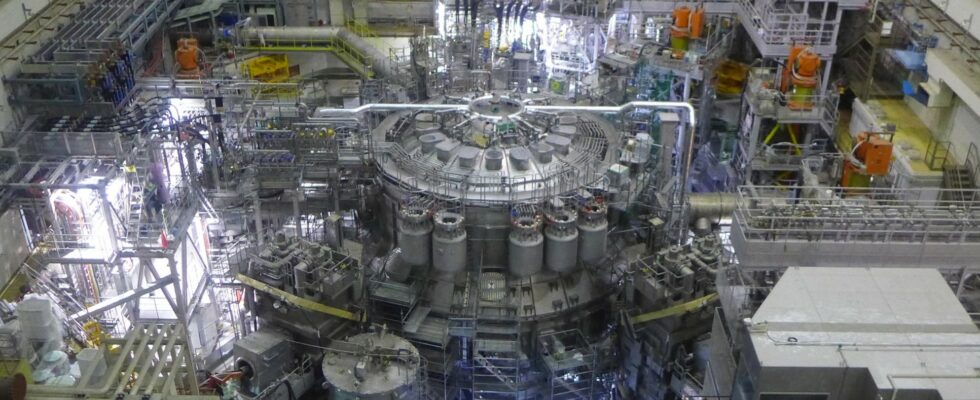This December 1, the JT-60SA officially became the largest active reactor dedicated to fusion research. After a decade of work and two years of repairs following an accident, its results will be used to better control fusion for ITER, but also for future commercial reactors.
It is a monster, 15.5 meters high and 13.5 meters in diameter, which has finally come to life in Naka, Ibaraki Prefecture, Japan. In the country’s most important installation (Japan has even attached a specialized fusion school), the Tokamak-type reactor has been producing its first revised campaign of very high energy hot plasmas since the end of October.
The inauguration, this Friday, December 1, in some way rewards these very important first results for fusion research. And it’s a Japanese success, but also a European one!
A new look for a new life
In reality, the JT-60 has lived several lives, as have many other fusion installations around the world. Indeed, it was built in the 1980s, then inaugurated for the first time in 1985. Its specificity is to have been designed as if it were going to reach the energy frontier at which a fusion reactor produces as much energy as it requires it to function (we commonly speak of break even or positive gain fusion)… knowing that the JT-60 does not reach this boundary. In fact, it does not use the most suitable isotopes of hydrogen, deuterium and tritium, only hydrogen and very little deuterium, which allows for installations that are much less exposed to radioactivity. , and therefore be able to modify them more quickly.
Very useful, knowing that the JT-60 is dedicated to research, and not to prove, like its more modern cousin ITER, that it is possible to produce energy beyond breakeven over significant periods. The JT-60 has therefore been modified and improved several times in almost 40 years: JT-60A, JT-60U and, now, JT-60SA, the modification of which began in 2013. While waiting for ITER, it is the largest reactor Tokamak in the world.
Maxi reactor, mini ITER
This latest improvement has a direct link with the ITER reactor, whose construction, fraught with problems (it is after all a new territory), is taking place in France on the Cadarache site. First, the JT60-SA is not just a Japanese reactor, it is partially financed and involves the work of numerous European researchers.
Then, the very essence of this modification aims to form high energy plasmas which will have the same shape as those of ITER: even if the JT-60SA is smaller, it now shares several key elements with the reactor in France, such as its conductive magnets, the way of cooling the reactor, the flow management, the control system… up to the same design software and documentation management.
Enough to measure, prepare and optimize on a smaller scale the fusion reactions which will take place on ITER by the end of the decade. A design and industrial challenge during which the JT-60SA also had to face various setbacks. The most important took place in March 2021, when the reactor was ready. During a test with its powerful magnetic field, a short circuit caused damage, an investigation and 25 months of work. It’s a long way to master this “energy of the stars”!
Source : FranceTVInfo

11